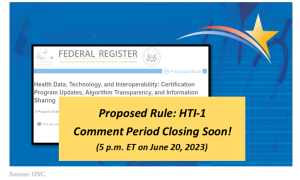With ONC finally designating FHIR Release 4 as the required standard for APIs in healthcare, the virtual FHIR Connectathon #24 was the place to be! Dynamic Health IT (DHIT) attended in full force, ready to collaborate, learn, show and tell. Normally the FHIR Connectathons (held in conjunction with the HL7 International Working Group Meetings) are a great opportunity for the FHIR community to interact and work face-to-face. In this post-COVID-19 world, last week was different. There were benefits to having a virtual Connectathon, though:
- More were able to participate – over 50% increase in the number of participants
- DHIT had 5 participants – the most ever
- The Zoom breakout rooms allowed attendees to span more topics
DHIT participated in 7 of the 37 tracks of the FHIR Connectathon. We focused on FHIR use cases that will benefit our customer base and satisfy the ONC’s EHR certification requirements.
Electronic Case Reporting (ECR)
With the COVID pandemic on everyone’s minds, Electronic Case Reporting (ECR) to track the disease spread was a hot topic at this Connectathon. The Public Health Track focused on educating attendees on the CDC’s new SMART on FHIR app called “eCR Now”, which uses FHIR DSTU3. The goal of eCR Now is automatic reporting without disruption of provider workflow when a diagnosis or problem list item is recorded. Sessions focused on how to trigger the app in order to report to public health agencies. Aside from the COVID epidemic, eCR is also an ONC EHR certification criterion – 170.315(f)(5) and included in MIPS and Promoting Interoperability. DHIT can make an eCR xml available as a FHIR resource.
Bulk Data Track
DHIT also participated in the Bulk Data Track, anticipating that this will be an important component of the new 21st Century Cures 170.315(g)(10) “Standardized API” criterion, which expands the API component of Certified EHR Technology. Prior to 21st Century Cures, certification only required an API that could provide data for a single patient; now the requirement has expanded to include FHIR data for a group of patients. We explored how to implement the export operation using an asynchronous process. HL7 provides additional resources on FHIR Bulk Data.
Da-Vinci Gaps in Care
Gaps in Care was another exciting track that ties together our expertise with FHIR and Clinical Quality Measures. A “Gap in Care” is defined as a discrepancy between recommended best practices for patient care (think of a CQM) and the actual patient care that was provided and documented. A typical use case: “Give me the gaps in care for this list of patients.” The Gaps in Care Connectathon track aims to develop a reference implementation and test $care-gaps operation for use cases. DHIT worked with the FHIR R4 Specification for Clinical Reasoning Module, Measure Resource and MeasureReport to move towards DaVinci Data Exchange for Quality (DEQM). The track objective was to test the $care-gaps operation on Measures in the Clinical Reasoning module.
DHIT is engaged in understanding where our CQMsolution Quality Measure product can provide added value using FHIR to help define the patient’s gaps in care.
Clinical Reasoning Track
The Clinical Reasoning track was one of the larger tracks with over 30 participants representing 28 companies and organizations. We focused on the Reporting and Calculation scenarios, which involve collecting the data in FHIR and also receiving an instruction to calculate a Clinical Quality Measure (CQM). After the measure is calculated, the results are made available via a FHIR MeasureReport. This scenario is of great interest to us since we anticipate that CQMs will be moving from the current QDM/HQMF representation to FHIR in the next couple years.
During the Connectathon, we successfully calculated measure EXM 349. This is a FHIR-converted measure from CMS 349. Note the EXM prefix is being used to differentiate it from the CMS measures that those of us in the eCQM world are accustomed to.
Overall, we felt that this was a very successful Connectathon in this brave new world and we are looking forward to continued progress on these important tracks. The collaboration and problem-solving that occurs, whether in person or virtually, is invaluable. Follow-up communication on Zulip, like this one for Gaps in Care: extends the value of the Connectathon. For more information, see the Confluence page.




